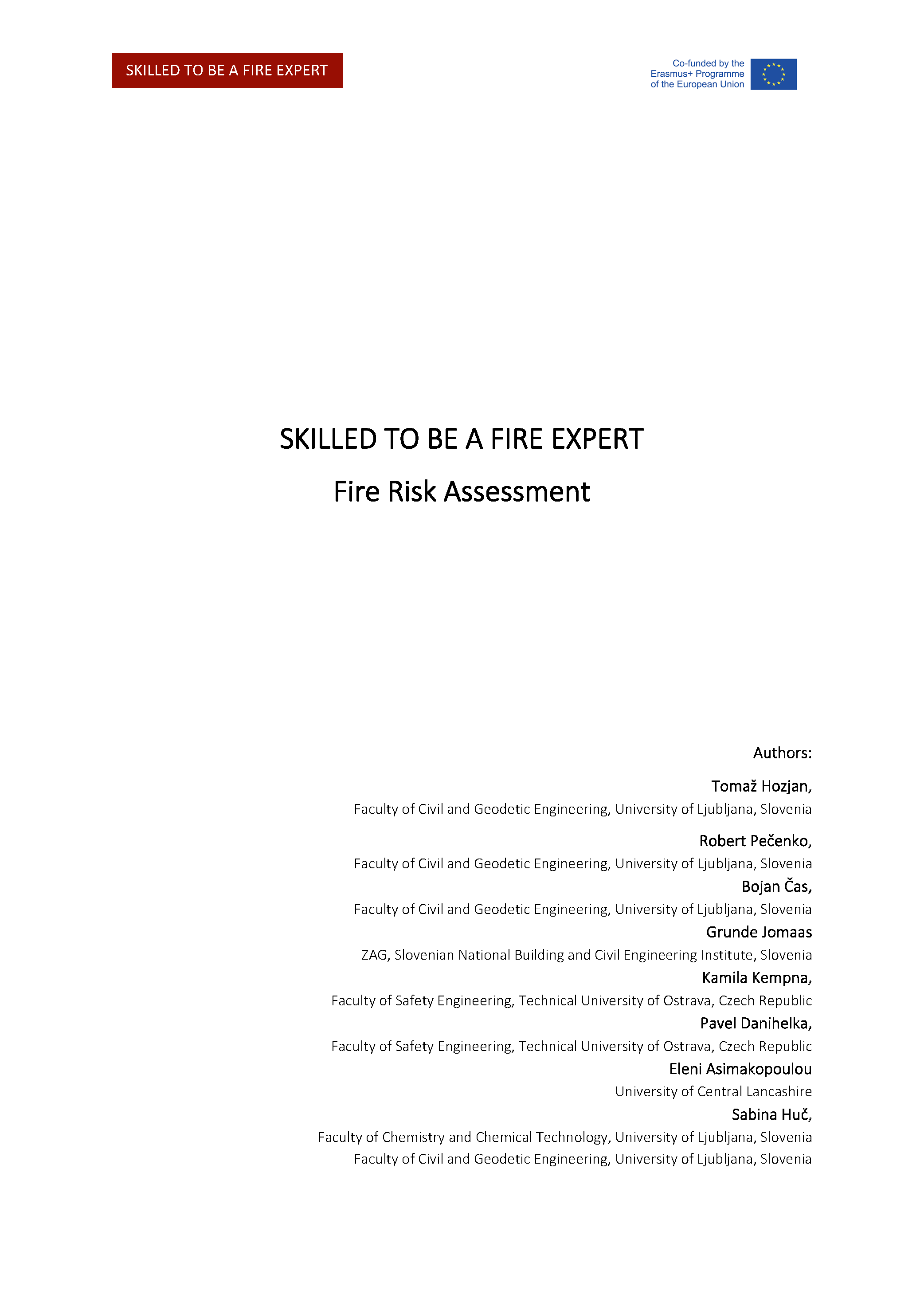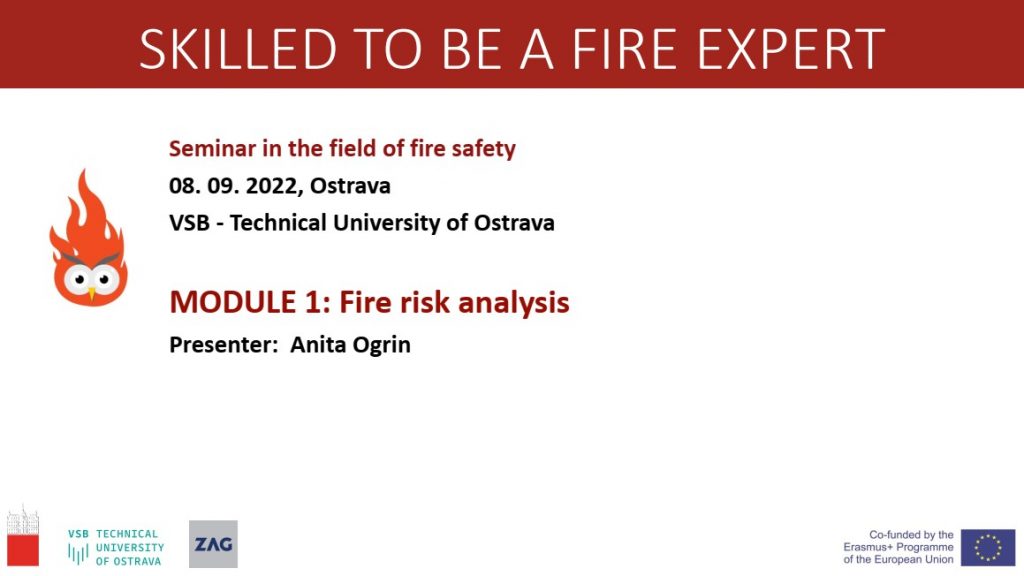Like any other accidental event, fire is usually the result of risks that exist in the individual building. Naturally, we try to reduce the risk of fire initiation with appropriate fire safety planning. Also, we wish to reduce the consequences of a fire,should it occur. Nevertheless, some levels of fire risk to occupants and propertyremain and need to be assessed. In Module 1 of the Skilled to be a Fire expert project, basic concepts of fire risk assessment are presented. Due to ongoing development of probabilistic fire risk assessment and lack of standardized approach in the field, however, the contents of module 1 remain mainly of an informative nature.
The purpose of fire risk evaluation in general
is to assist in making decisions about which risks need treatment and the
priority for treatment implementation. It involves comparing the level of fire
risk found during the fire risk analysis process with fire risk criteria
established when the context was considered. The main challenge remains to
determine the acceptable level of frequency – consequence concept (often
graphically presented by F-N curves). To obtain the required F-N curves the
statistical data of past fires is of great importance. The F-N framework
assumes that the design of a building can be realised only if all consequences
and their frequency are acceptable to society. Any further investments in
safety measures should be made on the basis of assessment of the ‘as low as is
reasonably practicable’ (ALARP) criterion, i.e., that risks are reduced to the
level where further reduction is no longer reasonable.


